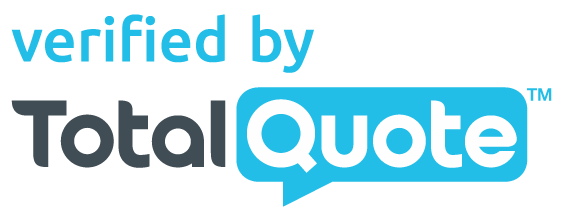Step 1: Request Quotes
Click 'Get Quotes' and tell us what you're looking for. We'll send you our free solar buyer's guide!

Click 'Get Quotes' and tell us what you're looking for. We'll send you our free solar buyer's guide!
Our trusted CEC accredited installers in your area will give you 3 quotes to compare at your leisure!
Choose the option that best suits your needs, and start saving money with solar power!
Homeowners installing solar panels in South Australia are entitled to the Federal Government's STC 'rebate'. This financial incentive comes in the form of Small-Scale Technology Certificates, commonly referred to as STCs. When you install a solar power system, a certain number of STCs are created based on the size and the location of your solar installation. Each STC carries a monetary value, and the total value of these certificates equates to your 'solar rebate.'
Your chosen solar company will handle the application for the rebate on your behalf and apply the value of this rebate as a discount at the point of sale. You can read more in-depth about the STC rebate in our recent blog post on the subject. To make life easy, we have calculated the value of the STC rebate you are entitled to for common solar system sizes here in South Australia below:
| System Size | Federal Government Rebate (STC's) | State Government Rebate |
|---|---|---|
| 2 kW | $1080 | Home Battery Scheme |
| 3 kW | $1620 | Home Battery Scheme |
| 4 kW | $2160 | Home Battery Scheme |
| 5 kW | $2736 | Home Battery Scheme |
| 6.6 kW | $3600 | Home Battery Scheme |
| 10 kW | $5472 | Home Battery Scheme |
*Please note that the STC rebate calculations are based on solar panels installed in Adelaide, SA (Zone 3) using an STC price of $36.00.
In addition to the Federal Government STC rebate, you may be eligible to the following South Australian State Government rebates:
Home Battery Scheme - this program offers SA residents a subsidy of $500 per kWh or $600 per kWh (energy concession holders) up to a maximum of $6,000 on the cost of solar battery storage with a low-interest loan if needed. Up to 40,000 homes will be eligible to take part in this scheme.
Virtual Power Plant Scheme - this program is open for SA residents to register their interest. A network of solar PV and battery systems working together to generate, store, and feed energy back into the grid, will create a virtual power plant. If the trial is successful on the 1,100 SA Housing Trust Households expected to be installed by October 2019, the program could be rolled out to an additional 49,000 properties.
Solar feed-in tariffs (FITs) are the amount you get paid by your energy retailer for the excess energy your solar system exports back into the grid. During the day, it’s typical for your solar power system to generate more power than is being used in your home. This excess means that if you have a grid-connected solar system, the energy you don't use feeds back into the grid, and your energy retailer will pay you a fixed amount per kWh of energy that you send to them. The retailer-provided solar FITs listed here do not include any bonus feed-in tariff that may be provided by the SA State Government.
| Energy Retailer | Min rate (per kWh) | Max rate (per kWh) |
|---|---|---|
| Origin Energy | 10.0c | 23.0c |
| Amaysim | 0.0c | 22.0c |
| AGL | 14.2c | 18.0c |
| Click Energy | 10.0c | 17.0c |
| Lumo Energy | 16.0c | 16.0c |
| Energy Locals | 10.0c | 16.0c |
| Red Energy | 16.0c | 16.0c |
| Energy Australia | 15.0c | 15.0c |
| Simply Energy | 10.0c | 15.0c |
| Powerdirect | 14.2c | 14.2c |
| Dodo | 11.6c | 11.6c |
| Commander | 11.6c | 11.6c |
| Powerclub | 0.0c | 11.5c |
| Powershop | 0.0c | 0.2c |
| Elysian Energy | 9.6c | 9.6c |
| Alinta Energy | 9.5c | 9.5c |
| QEnergy | 8.0c | 8.0c |
| Amber Electric | 8.0c | 8.0c |
| Kogan Energy | 7.5c | 7.5c |
| Momentum Energy | 6.8c | 6.8c |
| Blue NRG | 6.8c | 6.8c |
| Diamond Energy | 0.0c | 0.0c |
*The feed-in tariff rates you are entitled to vary depending on the energy plan you choose with the retailer. Feed-in tariff rates displayed are correct as of March 2020.
Choosing the right system size depends on many factors, including how much power you use during daylight hours, your roof orientation, whether shading will be an issue, and how much roof space you have at your home or business. In general, if you can afford to pay your power bills, then you can afford to invest in solar because the system will pay for itself in energy savings. As a rough guide, you can compare the average daily power usage on your power bill to the average daily output of common system sizes we have calculated in the table below:
| System Size | Avg daily output | Return on Investment |
|---|---|---|
| 2 kW | 8.4 kWh | 3 - 5 years |
| 3 kW | 12.6 kWh | 3 - 5 years |
| 4 kW | 16.8 kWh | 3 - 5 years |
| 5 kW | 21.0 kWh | 3 - 5 years |
| 6.6 kW | 27.7 kWh | 3 - 5 years |
| 10 kW | 42.0 kWh | 3 - 5 years |
*Please note that the location used for above the daily output calculations is Adelaide, SA - based on the Clean Energy Council GC Design Guidelines.
We’ve proudly helped tens of thousands of homeowners compare solar quotes in South Australia over the past five years. There are now 284,883 homeowners in the Wine State enjoying the benefits of solar power in their homes!
We’ve partnered with Australia’s leading solar providers to help you make an informed decision on solar power. Just complete the simple form, and we’ll organise for three of the highest-rated local solar companies to provide you with detailed quotes on solar power for your home. Find out how much you can save today!









